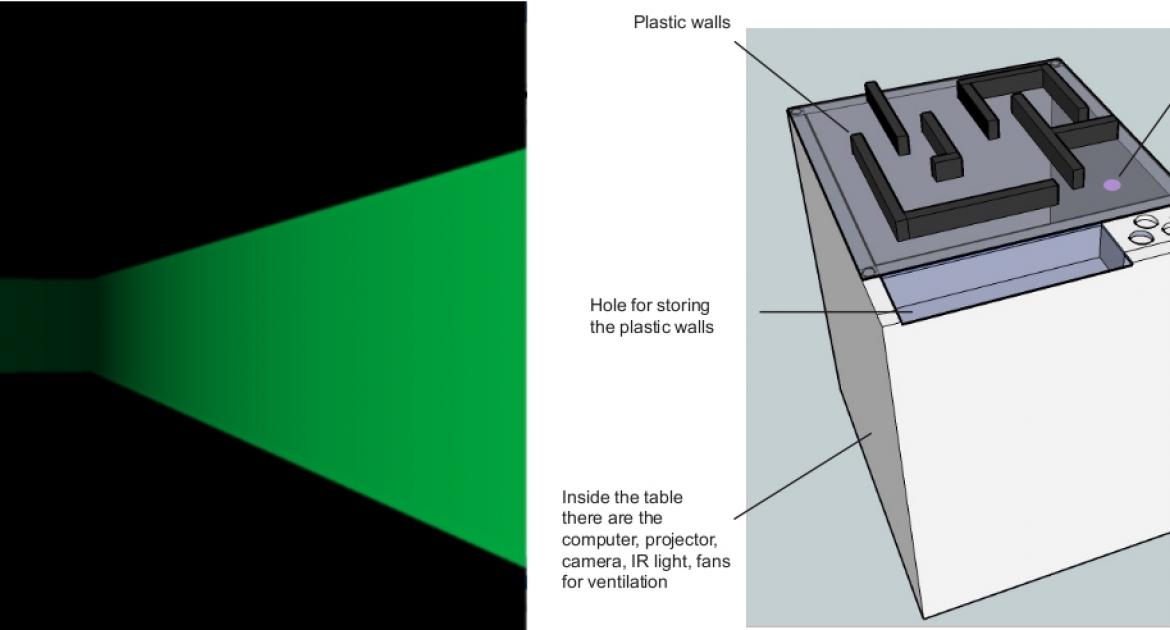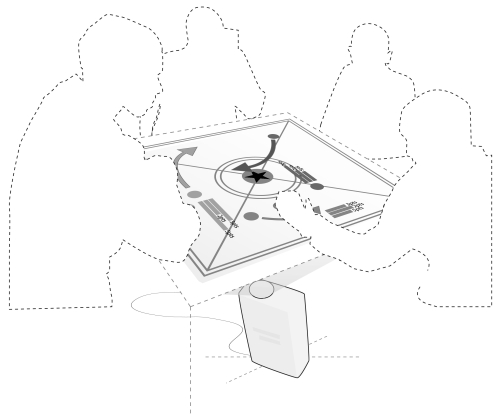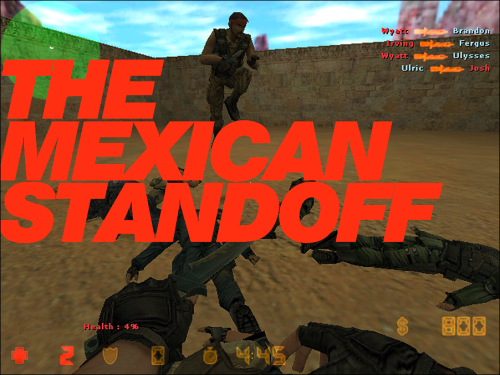Playlab - Selected Projects

The Maze EV
By Javier Lloret (Madrid)

The maze Ev is a game for 2 players where each of the players has a different role. The “Maze designer“ builds a maze with a tangible user interface. His goal is to avoid that the other player reaches the exit on time. The “Inside the maze player” appears inside the designed maze and has to find the exit before the time runs out.
The “Maze designer” has to use some walls to build a maze on the table that can be modified through the game with the objective of trapping the “Inside the maze player”. These walls can be placed wherever he wants on the table to build the maze. At that moment the game will verify that there is actually a valid path between the entrance and the exit. Once the maze has been validated the game starts.The fact that the maze designer is able to modify the structure of the maze during the game makes the game more dynamic.
ADONEO; An open environment for developing augmented board games
By Javier Noguerol (Madrid)

Adoneo is a project for creating an open platform for developing computer assisted board games. The current state of research in the field of interfaces in addition to the ubiquitous nature of certain home computer equipment (such as computers and mobile phones with cameras and Internet connections) enable us to imagine a new generation of computer enhanced games that explore different subjects in a more appealing way, are easier to use, are available to a larger audience, and that, while preserving their character as board games, turn out to be more entertaining.
The project’s main aim is to explore the new forms of this type of games provided by electronics and computer science and to create a design development environment for them that is versatile, free, and easy to use.
Audiogames
By Eurídice Cabañes (Madrid)
The first Audio Game prototype we intend to develop at PlayLab consists of an interactive sound space. First we will generate one or more 3D worlds of 3 x 3 meters in Blender, Open Simulator or any other similar free software program, taking into account that we will need an empty similar space for the user to move. User's possition in the space will be detected by Open CV and two accelerometers, and it will be communicated to the 3D world, so the user will be interacting with that world without viewing it.
In order to make this possible, we will create a sound programme based on vision/sound synaesthesia principles, that will create sound for the 3D world in real time depending on the user's possition and movements on the real space. The user, who can be blind, will move around a sound virtual space, while the audience can watch in a screen the interaction of this user in the 3D world (the user has no access to that).
The Pingus Plasticiline Experience
By Plastic Interaction (Barcelona)

The Pingus Plasticiline Experience is a project arising out of the classic “Lemmings” computer puzzle, based on the popular belief that lemmings commit mass suicide when faced with dangerous situations. The point of the game is clear: to guide the larger number of characters to the exit of the map, avoiding dangerous elements such as ditches, lava, water, tramps, etc.
Through an augmented reality platform, users can participate in and modify the scenarios, using plasticiline of different colours as an interface to guide the lemmings to safety. In addition, the maps will be made entirely of paper, enabling participants to quickly and freely design their own scenarios or play with them instantaneously and exchange them with other people.
UKI (a viral game)
By Shu Lea Cheang (Paris)
UKI as a viral game sets up an evil GENOM corporation who takes hostage of human body/bodies and establishes the (after the net-crash) BIONET. The BIONET reformats erythrocytes (red blood cells) as computing units to reprogram and generate ORGANISMO (Organic Orgasmo) which promises self-fulfilled, self-contained orgasm that bypasses needs for human body interaction. UKI, the virus, borne out of E-trashscape, takes up the mission to infiltrate GENOM's BIONET, to stop ORGANISMO production and reclaim the Original human orgasm.
UKI as a viral game takes off from classic rail shooter video game REZ (release in Japan in 2001 for Dreamcast and PlayStation2). It is to be developed in 4 levels: Level 1: Infecting Public - the multification of UKI virus - the virusRus; Level 2: Mobilize Virus UKI - the launch of UKI virus - plug in - suck my code; Level 3: Enter the Bionet - let the battle begins - there will be blood; Level 4: Orgasmo Colectivo - End game with no end.
La vida de los otros Game (Lives of Others Game)
By Inés Lucas and Raquel Antoñana (Madrid)

La vida de los otros (Other People’s Lives) is a videogame in which the real and the virtual are combined, arising out of the everyday, intuitive act of watching the people around us and guessing what their lives are like.
The point of the game is to guess a set of parameters in other people’s lives in a set of certain real scenarios. The video game is activated with the GUESS LIFE application for mobile telephone, PDA or laptop video console. Players have to register first on the official website and fill in a set of parameters. Then a game code will be assigned. This code is the player’s avatar. The game spaces are anywhere with GUESS LIFE where the player turns on the game from their mobile device. The GUESS LIFE application locates the other players in that space and situates them in a setting through their avatar-codes. The player identifies the codes with the people present in the game space and starts to speculate about the possible characteristics of the other players. When the player is certain about some information about another player, the player fills that field in on the form and the game says whether the answer is right. If it is correct, it will be recorded on the player’s form.
The Mexican Standoff
By Tim Devine y Onur Sonmez (Linz, Austria)

The Mexican Standoff removes the link between the persons thoughts and actions; people are directly thinking about what they are doing – creating a hyperreality.
Two people use their minds via EEG headsets to fire their guns in a Mexican Standoff realised in an ultra-violent first person shooter (FPS). The characters take a long time to die so the game can last for quite some time. To trigger the EEG interface the person needs to think about pulling a trigger in their right hand. When this is detected the avatar will begin to shoot the other. In popular culture, a Mexican Standoff is usually portrayed as two or more opponents with guns at the ready, creating a very tense situation. A Mexican standoff is a slang term defined as a stalemate or impasse, a confrontation that neither side can win.
http://timdevine.net/the-mexican-standoff-creating-a-hyperreality/
Homeward Journeys
By Lara Sanchez Coterón and Amaya Jiménez (Madrid)

Homeward Journeys is small-scale game theatre in which characters typical of post-Capitalist society (an executive, a porn star, etc.) travel on a search. The content of this gameperformances offers a critical approach to post-Capitalist roles and game mechanics that indoctrinate speedy efficiency.
Formally, it is a series of “SEARCH AND FIND” GAMES, in which the audience serves as an active agent (player), guiding and helping the actor-performer in carrying out his or her mission, which leads to investigate about collective game forms. The diegetic game space is part of the physical staging, and the performer himself serves as the audence's physical avatar.



 Medialab-Matadero Madrid
Medialab-Matadero Madrid